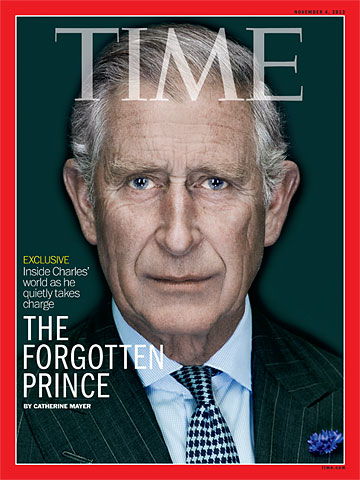
(6 of 8)
Antimonarchists see in Charles a weak link between his unassailable mother and the glamorous younger generation rendered more vulnerable, not less, by his commitment to making the most of his inherited position. They aren't wrong. At various times the Prince's determination to do the right thing has come close to alienating entire professions, most famously architects. He has three times intervened to raise concerns about plans for modernist developments in London: an extension to the National Gallery; a remodeling of Paternoster Square, next to St. Paul's Cathedral; and a swath of luxury flats on the site of a former army barracks in well-heeled Chelsea. Three times the original plans have been shredded. Some architects say he has sparked a valuable discussion about engaging with the people and communities involved. Richard Rogers--the architect of iconic buildings including the Pompidou Center in Paris and the thwarted designer of the scrapped Paternoster and Chelsea schemes--disagrees. "The Prince does not debate, and in a democracy that is unacceptable," he told the Guardian newspaper.
Closely handwritten letters from the Prince regularly land on the desks of British ministers and their opposition counterparts. Newspaper reports in August revealed that the Prince had held 36 meetings with Cabinet ministers since Britain's coalition government came to power in 2010. The same month, Rupert Murdoch's Sunday Times alleged that the Prince had placed "moles" at the heart of Britain's government. Proof positive, say his critics, that he is interfering in the political process.
The moles were civil servants on routine assignment to ministries. Past and present ministers also put a different slant on the scare stories. They have found meetings with the Prince useful, if surreal. At first meeting, he resembles his cartoon versions: his face, in conversation, like an Irish dancer remains immobile in the upper reaches, with the lower half doing all the work. Then you listen to his words and find yourself surprised again. "You keep pinching yourself," says one former Cabinet minister, who praises the Prince's expertise and cites examples of his using convening power to help overcome partisan blockages simply by getting people together in a room. "Those who don't like the contents of his views allege constitutional impropriety as a way of undermining the views he holds. Those who don't like his views present them as wacky," says the minister, who adds, "I took him seriously, and he took me seriously."
Off With His Headlines
Britain's mass-market newspapers, which see themselves as the proxies of ordinary people, were never going to give a green-hued, intellectually ambitious Prince with radical ideas a free pass. His temerity in preferring the warmth and cheer of Camilla to a beautiful icon whose image guaranteed newsstand sales deepened hostility. Charles and Camilla married in 2005. By 2010 the Daily Mail claimed the couple were living "separate lives." The second Mrs. Windsor--made the Duchess of Cornwall at her marriage--couldn't cope with royal life.
